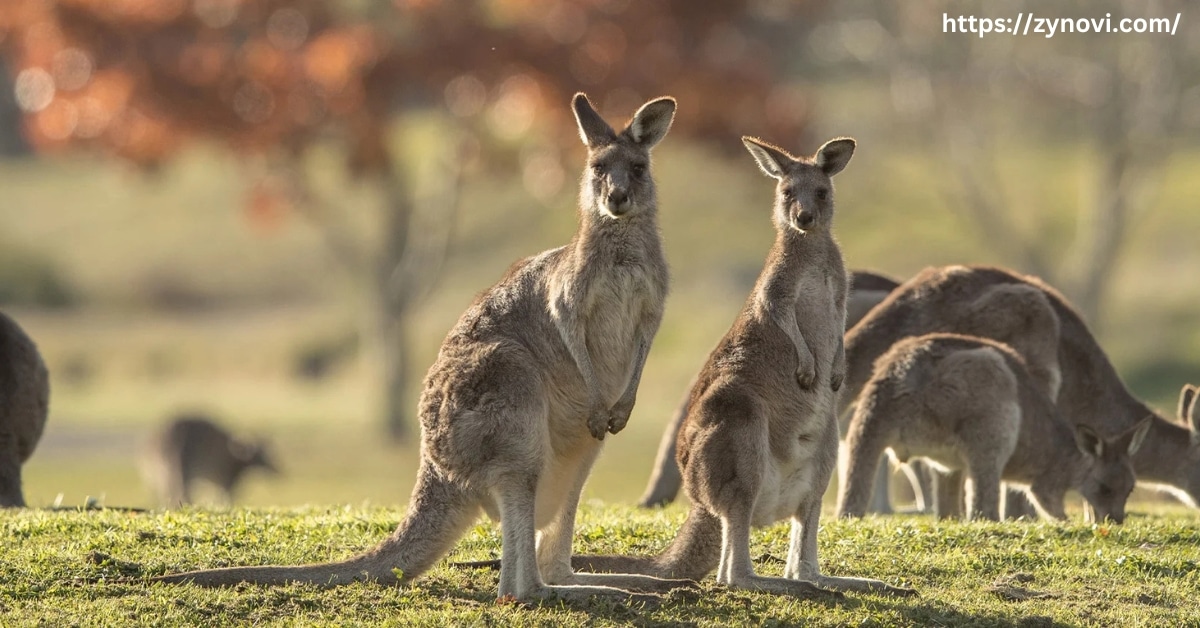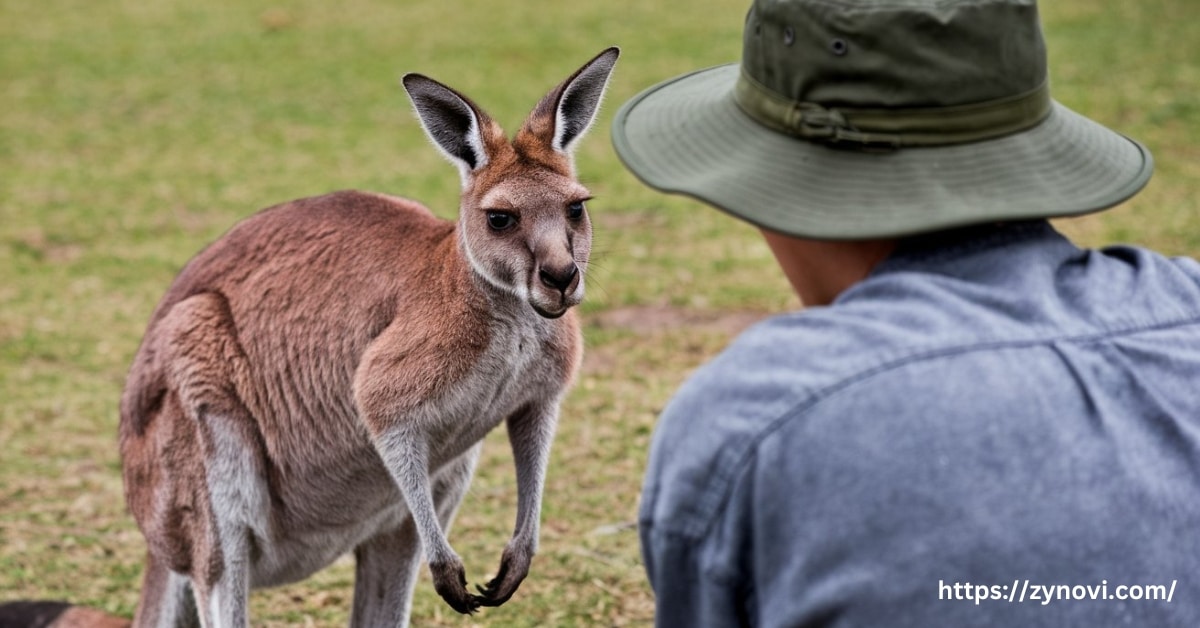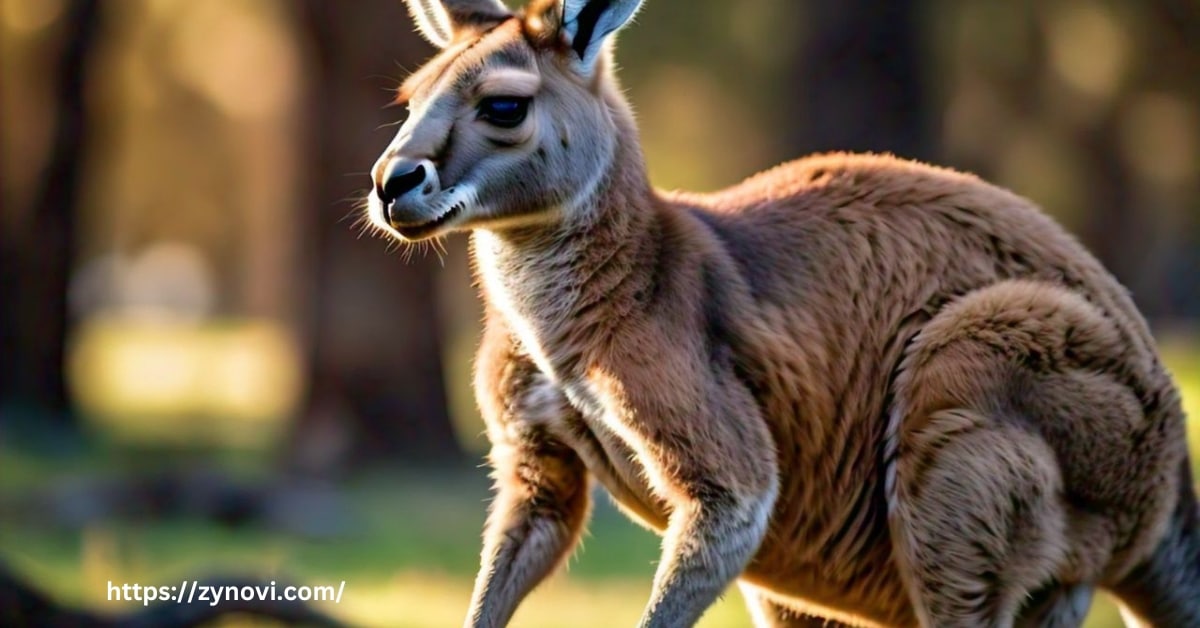Do kangaroos attack humans? It’s a question that might surprise you, especially when you think of about Australian animals as peaceful and gentle. But, as with any wild creature, kangaroos can be unpredictable when they feel threatened.
Whether you’re planning a trip to Australia or simply curious, understanding when and why kangaroos might lash out is essential.
In this article, we’ll jump into the reasons behind kangaroo aggression and what you can do to stay safe. You’ll discover key signs of danger, how to avoid risky encounters, and what to do if you ever find yourself in a sticky situation.
Understanding Kangaroos
What Are Kangaroos?
Kangaroos are large marsupials native to Australia. They belong to the family Macropodidae, meaning “big foot,” and are best known for their strong hind legs, long tails, and pouches for carrying their young, called joeys.
There are four main species:
- Red Kangaroo: This specie is not only the largest kangaroo species but also the largest living marsupial on Earth. Found widely across open plains and deserts in Australia, this species is known for its reddish-brown fur and impressive ability to travel long distances in arid environments.
- Eastern Grey Kangaroo: This is one of the most common kangaroo species and is frequently spotted in grasslands and woodlands along Australia’s eastern coast. These kangaroos are known for their grayish fur and social behavior, often forming large mobs in areas with abundant vegetation.
- Western Grey Kangaroo: Found primarily in the southern regions of Australia, especially in Western Australia, this specie has a shaggy brownish-gray coat and a distinctive earthy odor, earning it the nickname “stinker.” They thrive in semi-arid to wooded habitats, adapting well to varied conditions.
- Antilopine Kangaroo: This specie inhabits the tropical savannas of Northern Australia, where it roams in small groups across lush, open landscapes. Unlike other kangaroo species, it exhibits a slender build and light-colored fur, making it well-suited for the warm and humid climate of the region.
Kangaroo Behavior and Social Dynamics
- Crepuscular Activity: Kangaroos are primarily crepuscular, meaning they are most active during the early hours of dawn and the late hours of dusk. This activity pattern helps them avoid the scorching midday heat in their natural habitats.
- Social Structure: Kangaroos live in groups known as mobs, which can range from small gatherings to large groups of 10 or more individuals. These mobs provide safety in numbers and are essential for social interaction and reproduction.
- Dominant Males: Within a mob, a dominant male, often referred to as the “boomer,” typically leads the group. This male is responsible for defending the mob’s territory and ensuring access to mates.
- Species-Specific Behavior: While kangaroo behavior differs slightly between species, all kangaroos share some common traits. They exhibit strong territorial defense and are extremely protective of their joeys, ensuring their survival in the wild.
Do Kangaroos Attack Humans?

Can kangaroos kill you? Although kangaroos rarely attack humans unprovoked, certain situations can trigger aggression. Understanding these triggers is crucial for avoiding dangerous encounters.
Why Would Kangaroos Attack Humans?
Kangaroos attack humans for various reasons, including:
- Territorial Defense: Kangaroos are highly territorial animals, and any perceived encroachment on their space may provoke defensive behavior. This is especially common when humans unknowingly venture too close.
- Protecting Offspring: Female kangaroos, or mothers, are extremely protective of their joeys. If they sense a threat near their young, they may become aggressive to safeguard their offspring.
- Food Aggression: Feeding wild kangaroos can create an unnatural dependency, leading to food aggression. When food is unavailable, they may lash out in frustration.
- Feeling Cornered: A kangaroo that feels trapped or startled, such as during sudden movements or loud noises, may react defensively to escape the perceived danger.
- Mating Season: During mating season, dominant males exhibit heightened aggression as they compete for mates, making them more likely to attack if they feel challenged or threatened.
Examples of Kangaroo Attacks in humans
- In 2022, a man in Western Australia was killed by a kangaroo he had raised as a pet.
- A jogger in Queensland suffered severe injuries after inadvertently entering a kangaroo’s territory.
- Tourists feeding kangaroos at wildlife parks have reported attacks when food runs out.
How Dangerous Are Kangaroos Attack?
Kangaroos are powerful animals capable of inflicting serious harm:
- Kicks: Kangaroos deliver powerful kicks using their hind legs, which are strong enough to break bones or cause significant internal injuries. These kicks are their primary means of defense during confrontations.
- Claws: The sharp claws on their front paws can inflict deep cuts and other serious injuries. These claws are often used in a boxing motion when they feel threatened or during fights with other kangaroos.
- Tail Support: Kangaroos use their muscular tails as a third limb, providing balance while they deliver forceful kicks. This unique trait enhances the effectiveness of their defensive strikes, making them formidable opponents.
Are Kangaroos Attack Common in Humans?
Statistics show that kangaroo attacks on humans are rare. Most incidents occur when humans approach too closely or provoke the animals unintentionally.
| Year | Reported Attacks | Fatalities |
|---|---|---|
| 2020 | 16 | 0 |
| 2021 | 12 | 0 |
| 2022 | 18 | 1 |
Recognizing Signs of Aggression in Kangaroos
Look for these warning signals to avoid an attack:
- Standing Tall: When a kangaroo stands tall with an erect posture, it’s often a sign of asserting dominance or preparing for a potential threat. This stance is a clear warning to back off.
- Boxing Posture: A kangaroo raising its front paws and adopting a boxing-like stance is preparing for confrontation. This posture is often accompanied by sharp movements as a display of strength.
- Vocal Signals: Growling, hissing, or clicking sounds are vocal cues that indicate irritation or aggression. These noises are meant to warn intruders to stay away.
- Aggressive Tail Use: If a kangaroo leans forward aggressively and uses its tail for balance, it might be readying itself to deliver a powerful kick. This behavior should be seen as an immediate sign to retreat.
Are Kangaroo Attacks Fatal?

Kangaroo attacks injuries can cause significant harm, fatalities are extremely rare. Most incidents involve injuries rather than life-threatening outcomes, making death from such encounters an uncommon occurrence.
The most severe cases of aggression usually involve dominant males defending their territory or asserting dominance during mating season. These males are larger, stronger, and more likely to inflict serious harm during confrontations.
Kangaroo attacks often result in broken bones, deep lacerations, or other serious injuries caused by their powerful kicks and sharp claws. Without prompt treatment, these injuries can lead to complications like infection, which may become life-threatening.
Preventing Kangaroos Attack Humans
How to Avoid Dangerous Encounters
- Maintain a Safe Distance: Always stay at least 15-20 meters away from kangaroos to avoid invading their personal space. Getting too close may trigger defensive or aggressive behavior.
- Avoid Feeding Kangaroos: Feeding kangaroos can disrupt their natural behavior, making them more dependent on humans and potentially aggressive when food is not provided.
- Stay Aware During Crepuscular Hours: Since kangaroos are most active at dawn and dusk, exercise extra caution during these times to minimize the risk of unexpected encounters.
Precautions Around Kangaroos
- Observe Their Behavior: Pay attention to signs of aggression, such as standing tall or growling, and back away slowly if you notice these warning signals.
- Use Barriers for Protection: If you feel threatened, use objects like a backpack or jacket as a barrier to shield yourself and deter the kangaroo.
- Stay Calm: Avoid running, as kangaroos may interpret this as a threat or an invitation to chase. Remaining calm and moving away slowly is the safest response.
What To Do If a Kangaroo Injures You

Immediate First Aid
- Control Bleeding: Apply firm pressure to any cuts or wounds to stop the bleeding. Use a clean cloth or gauze, and elevate the injured area if possible to reduce blood flow to the wound.
- Clean the Wound: After stopping the bleeding, clean the wound with an antiseptic solution to reduce the risk of infection. Avoid using dirty water or non-sterile materials to prevent further contamination.
- Immobilize Injuries: If you suspect broken bones, use a splint or any rigid object to immobilize the injury. This can help prevent further damage until medical help arrives.
When to Seek Medical Help
- Deep Cuts or Scratches: Any deep cuts or scratches should be professionally cleaned and treated with antibiotics to prevent infection and ensure proper healing.
- Signs of Infection: If you notice redness, swelling, or a fever around the wound, seek medical attention immediately, as these are signs of infection that require prompt treatment.
- Report Serious Incidents: For serious incidents involving kangaroos, it’s important to report the attack to local wildlife authorities. This helps monitor the situation and can prevent further encounters.
Final Thoughts
Kangaroos are incredible creatures that play a crucial role in Australia’s ecosystem. However, like any wild animal, they deserve respect and space. While kangaroos attacks are rare, they can be dangerous if the animal feels threatened or cornered.
By understanding their behavior such as recognizing signs of aggression and maintaining a safe distance you can significantly reduce the risk of an encounter. Remember, these animals are not naturally aggressive but will defend their territory and offspring if provoked.
With precautionary measures in place, humans and kangaroos can coexist peacefully, allowing us to appreciate these majestic marsupials without fear. Stay aware, stay safe, and respect their space.
FAQs
Do kangaroos attack humans often?
No, attacks are uncommon and usually occur due to human provocation or environmental stress.
How can I avoid aggressive kangaroos?
Maintain distance, avoid feeding, and learn to recognize signs of aggression.
What should I do if a kangaroo threatens me?
Stay calm, back away slowly, and use objects as barriers if needed.
Are kangaroo attacks fatal to humans?
Fatalities are extremely rare, but injuries can be severe without proper treatment.
Conclusion: Do Kangaroos Attack Humans?
In conclusion, while kangaroo attacks on humans are rare, they do occur under specific circumstances, usually when the animal feels threatened or provoked. These fascinating creatures deserve respect, and understanding their natural behavior can help prevent dangerous encounters. By maintaining a safe distance, avoiding feeding them, and recognizing signs of aggression, you can minimize risks and enjoy the unique opportunity to observe kangaroos in the wild.
It’s important to approach these animals with caution and awareness, ensuring both human safety and the well-being of the kangaroos. With the right precautions, we can peacefully coexist with these remarkable marsupials and continue to admire them from afar.










